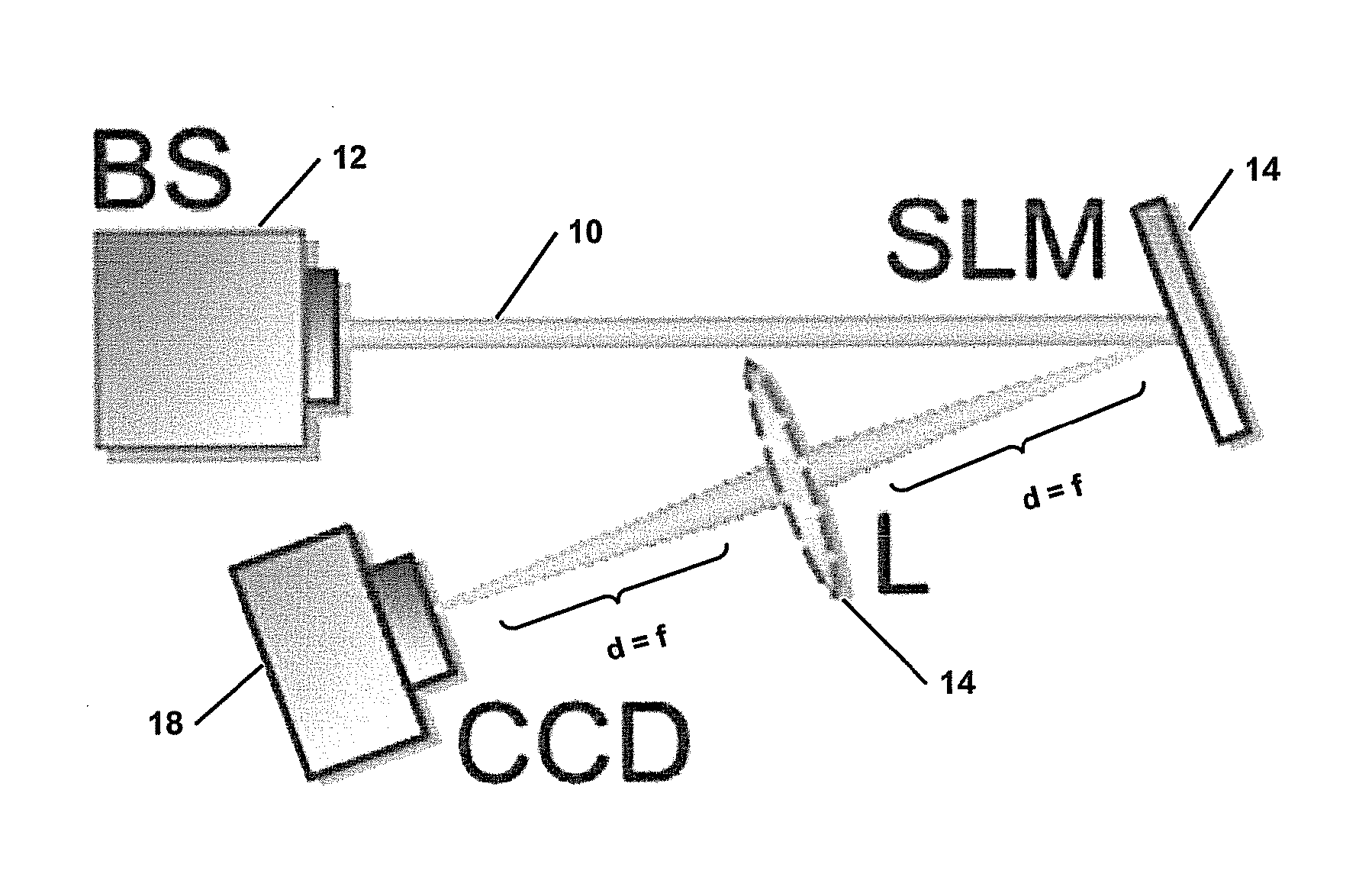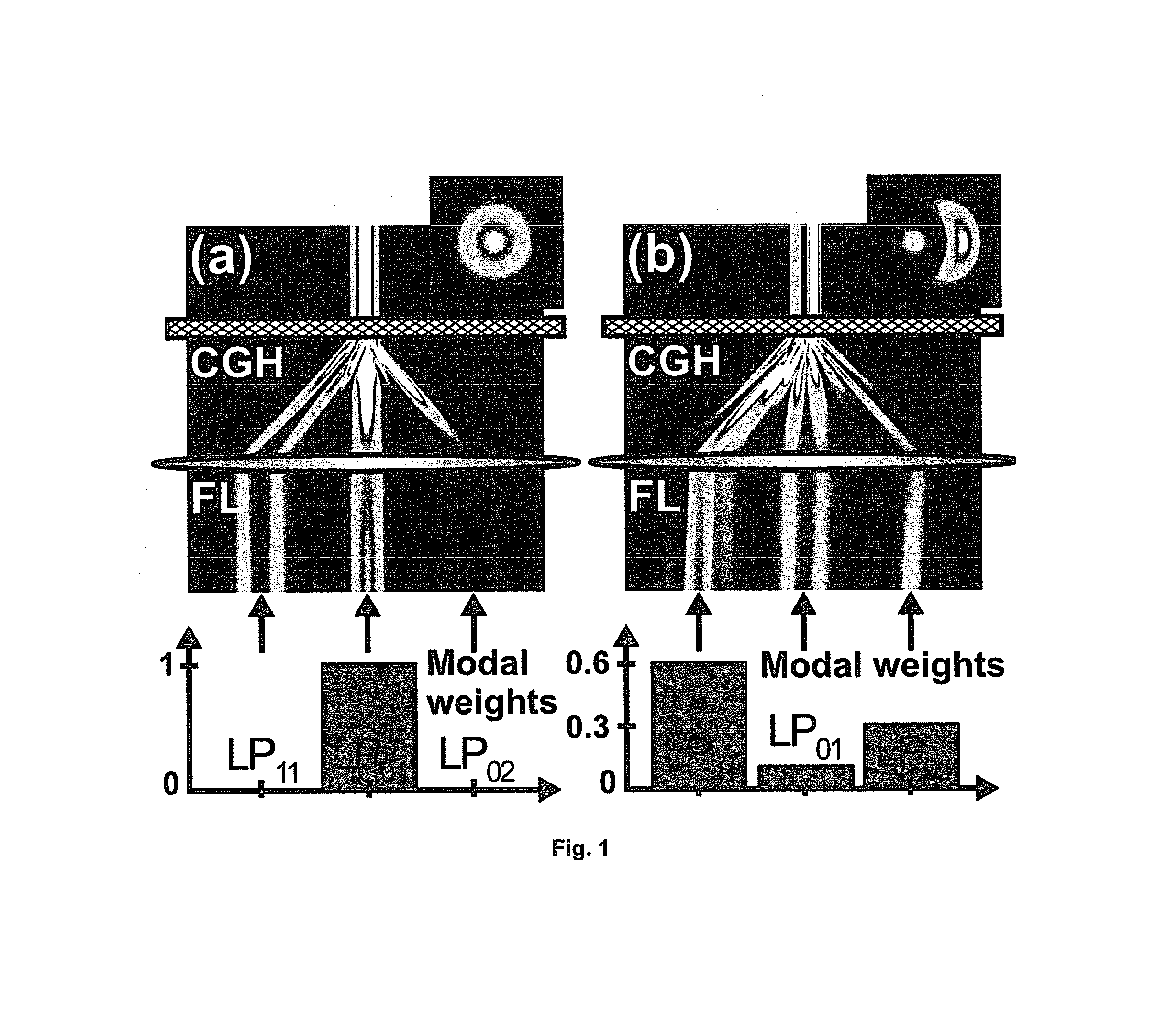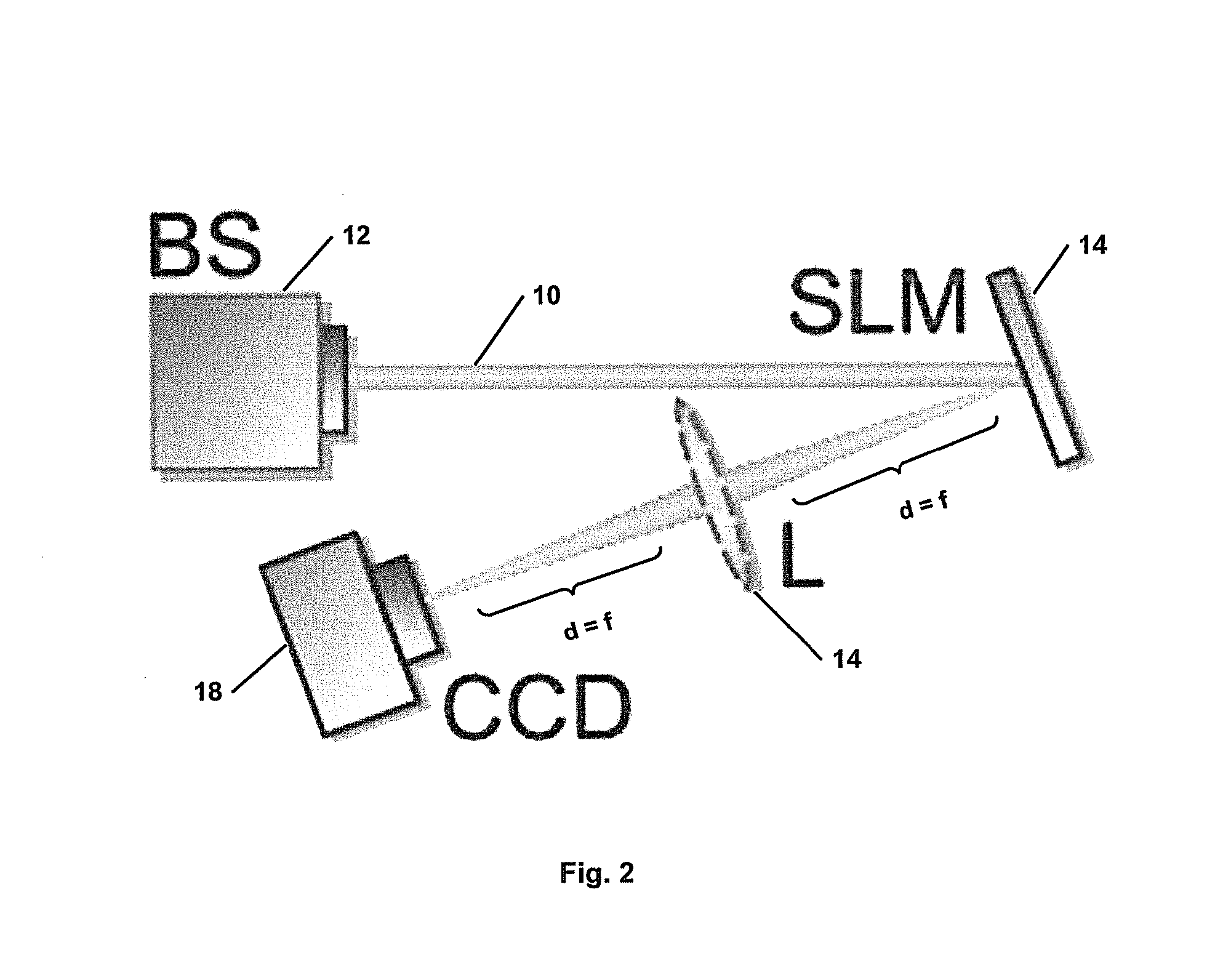Modal decomposition of a laser beam
- Summary
- Abstract
- Description
- Claims
- Application Information
AI Technical Summary
Benefits of technology
Problems solved by technology
Method used
Image
Examples
Embodiment Construction
[0034]Optical fields can be described by a suitable mode set; the spatial structure of this mode set {ψn(r)} can be derived from the scalar Helmholtz equation. Any arbitrary propagating field U(r) can be expressed as a phase dependent superposition of a finite number of nmax modes:
U(r)=∑n=1 nmaxcnψn(r)(1)
where due to their orthonormal property
(ψn|ψm)=∫∫R2d2rψ*n(r)ψm(r)=δnm, (2)
the complex expansion coefficients cn may be uniquely determined from
cn=ρn exp(iΔφn)=(ψn|∪) (3)
and are normalized according to
∑n=1 nmaxcn2=∑n=1 nmaxρn2=1(4)
[0035]The benefit of this basis expansion of the field is that the required information to completely describe the optical field [Eq. (1)] is drastically reduced to merely nmax complex numbers: this is sufficient to characterize every possible field in amplitude and phase. A further benefit is that the unknown parameters in Eq. (3), the modal weights (ρ2n) and phases (Δφn) can be found experimentally with a simple optical set-up for an inner product measu...
PUM
 Login to View More
Login to View More Abstract
Description
Claims
Application Information
 Login to View More
Login to View More - R&D
- Intellectual Property
- Life Sciences
- Materials
- Tech Scout
- Unparalleled Data Quality
- Higher Quality Content
- 60% Fewer Hallucinations
Browse by: Latest US Patents, China's latest patents, Technical Efficacy Thesaurus, Application Domain, Technology Topic, Popular Technical Reports.
© 2025 PatSnap. All rights reserved.Legal|Privacy policy|Modern Slavery Act Transparency Statement|Sitemap|About US| Contact US: help@patsnap.com



